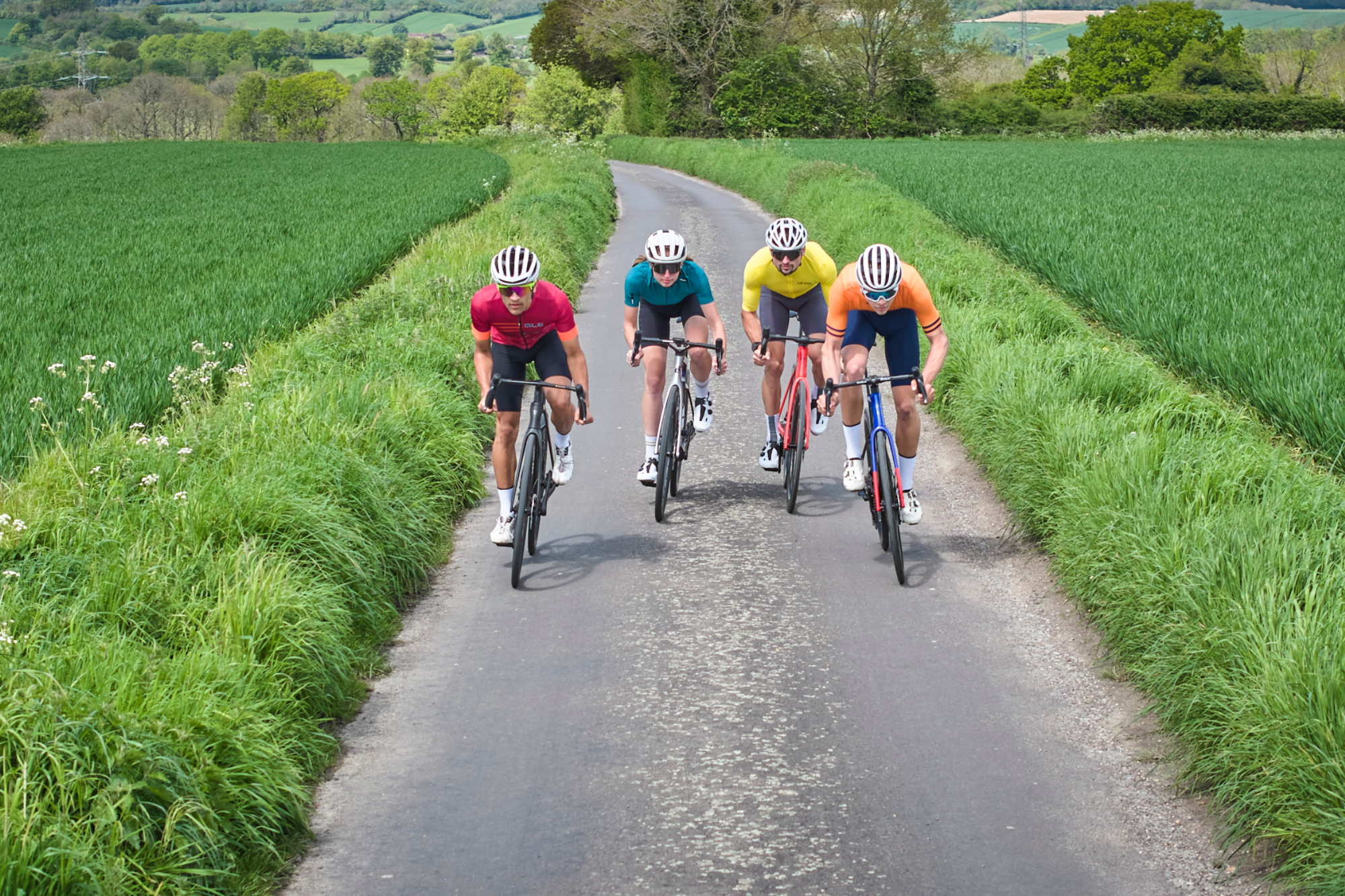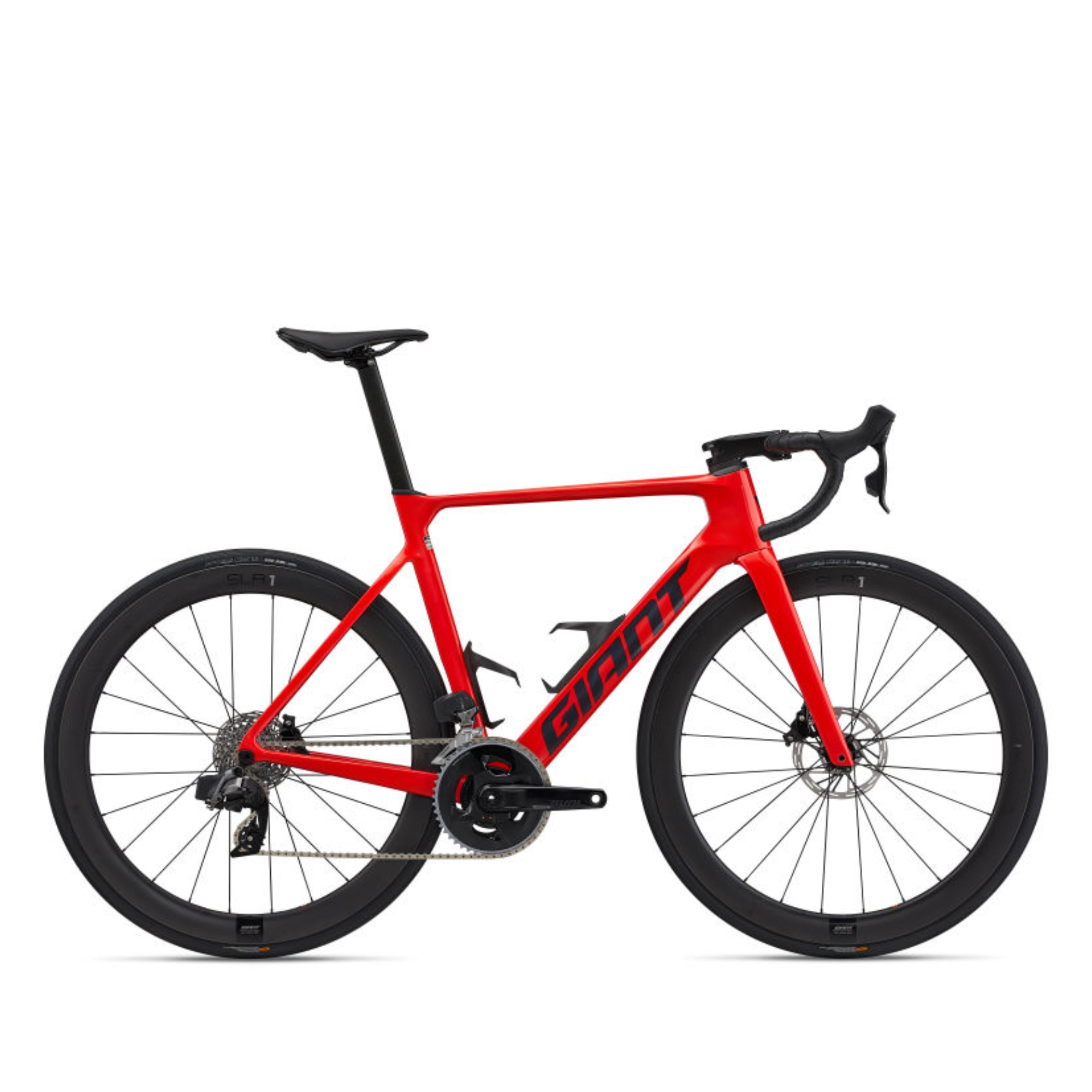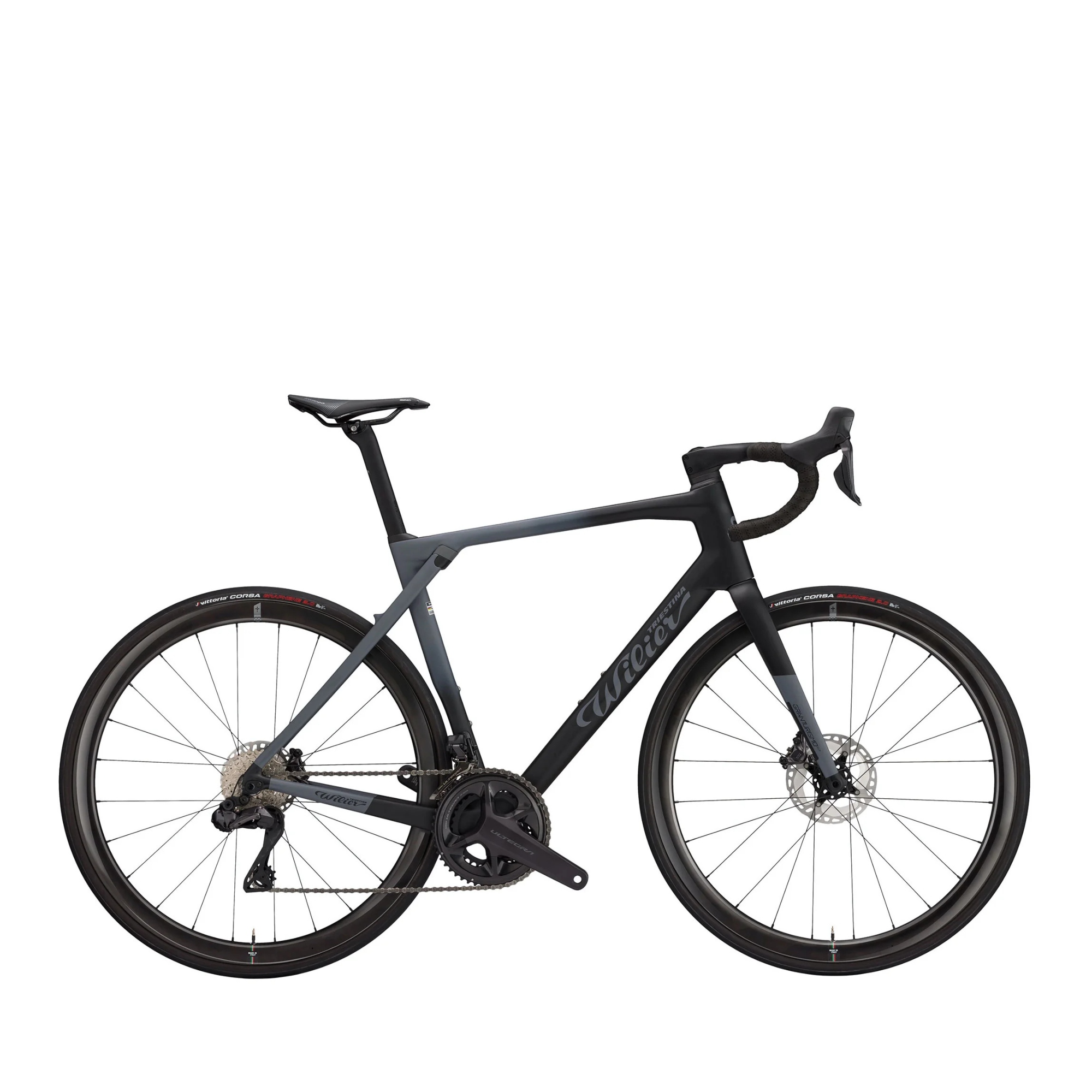Best carbon road bike: what makes good quality carbon and six bikes to consider
We pick our favorite carbon road bikes for varying applications

Best carbon road bikes: Jump Menu

Carbon is pretty much the number one material of choice when it comes to mainstream frame construction and as such there are an awful lot of carbon bike frames out there and there's no one 'best carbon bike'.
Whilst the frame material is at the heart of the bike, there are other elements to consider when choosing a new steed - the geometry, specification and value for money being key points as well as intended use. Do you want a race bike? Or perhaps you're after something for longer riders on varied surfaces? Are aerodynamics or low weight more important to you?
We've listed some of the most well-renowned carbon-framed road bikes which have fared well during our recent testing. We also have other dedicated guides which include the best road bikes, the best aero bikes and the best road bikes under $2500.
But for now, here are our picks of the best carbon road bikes...
The Quick List

Best race bike
Our Race Bike of the Year, the S5 is a superb all-rounder that blends sublime handling alongside pure speed. Wout van Aert's weapon of choice.

Best aero bike
The updated Madone features a radical frame design that yields impressive results. Fast, as you might expect, but also surprisingly smooth

Best value
Carbon race bikes don't come cheap but while the new Propel Advanced isn't a steal, it does deliver a great spec and performance for the money.

Best endurance bike
The Granturismo SLR uses some smart frame tech alongside sensible geometry to make it ideally suited to long, demanding days in the saddle.

Best climbing bike
The reworked SuperSix is a little more aero than previous editions but it's still great when the road points up...and down. No wonder its WorldTour winner.

Best all-road bike
The Venon Evo is impressively versatile with wide enough tire clearance for a range of road surfaces - including some light gravel.
The best carbon road bikes: Our picks
Best carbon race bike

Cervélo S5 carbon road bike
Specifications
Reasons to buy
Reasons to avoid
The S5's race credentials make for impressive reading. As one of the bikes ridden by Jumbo-Visma it's racked up back-to-back Tour de France wins, a green jersey in the same event as well as numerous stage and one-day races. Having sublime talent like Jonas Vingegaard, Wout van Aert and Marianne Vos certainly helps. But clearly the S5 isn't holding them back.
Like the Jumbo riders we were impressed when we tested the updated S5. So much so we awarded it our Race Bike of the Year for 2023. In simple terms it does everything well. It's straight-line speed is incredible, as is its cornering prowess - and unlike many aero race bikes it's also comfortable to ride.
The Reserve 52|63 wheels have a wide internal rim width - 25mm up front and 24mm out back. This in turn had the 28mm Vittoria Corsa tires actually measuring 31mm. When combined with the frameset, the result is a sublime ride quality - bags of grip, with much of the road chatter silenced. It adds up to plenty of speed when the surfaces are less than ideal.
At 8.22kg for this SRAM Force build, the S5 isn't light. However it doesn’t feel ‘heavy’ to ride and with it's aero properties and low rolling resistance it's still lightening quick.
The S5’s gains across the board – it’s handling, comfort and aerodynamics – more than make up for the extra mass. As the complete package, the Cervélo S5 deservedly wins our 2023 Race Bike of the Year award.
Read more: Cervélo S5 SRAM Force full review
Best carbon aero bike

Trek Madone SLR 7 carbon road bike
Specifications
Reasons to buy
Reasons to avoid
The revamped Madone gained plenty of attention on release, in no small part due to the radical frame design. The new IsoFlow technology, which replaces the IsoSpeed decoupler, reduces weight and improves airflow. To achieve this Trek engineers have created a 'hole' in the frame around the junction of the seat tube and stays, which allows turbulent air to pass through more efficiently.
Further aerodynamic enhancements come courtesy of the new cockpit. When we reviewed the Madone we found the handlebars to be an excellent design, supporting our wrists much better than more traditional bars and enabling us to stay lower for longer. The bars measure 42cm at the drops. But at the hoods, they narrow to just 39cm, helping create a more aero position without compromising stance width when descending.
It all translated to fast handling, with the bike responding to the smallest shift in weight and the tiniest tweaks of the bars. Yes the tire clearance could be more generous by today's standard (30mm) but the ride quality is still impressive. As our reviewer wrote, "If you have the budget and want a WorldTour-level race machine with exceptional handling and ride feel, this is the bike."
Read more: Trek Madone SLR 7 full review
Best value carbon road bike

Giant Propel Advanced Pro 1 carbon road bike
Specifications
Reasons to buy
Reasons to avoid
The new Propel Advanced Pro has been redesigned to add compliance and comfort to its impressive aero credentials. Giant have sought to achieve this balance by slimming down the tube shapes in places, notably the frame's rear triangle, and introducing a sloping top tube, which works alongside the narrower seat post.
And it works. When we reviewed the Propel Advanced Pro we found that it retained the speed of the outgoing model but now with more "native comfort". It's not the lightest of bikes, and if you live or ride regularly in very hilly terrain it might not be best suited. However, we found that the extra weight wasn't noticeable while our higher average speeds were.
While a road bike in the $/$5k range might not scream 'value', the Propel does deliver plenty of bike for your money, especially when viewed in comparison to some of the other big-hitting aero road bikes.
Read more: Giant Propel Advanced Pro full review
Best endurance carbon road bike

Wilier Granturismo SLR carbon road bike
Specifications
Reasons to buy
Reasons to avoid
The Granturismo SLR is what all good endurance bikes should be: comfortable yet still fast. But it's not always an easy balance to find.
Wilier has achieved it by using geometry that matches a higher stack height with a shorter reach, alongside its 'Actiflex 2.0 vibration damping system'. This bit of trickery is found at the intersection of the seat stays and the toptube, with the elastomer providing up to 5mm in vertical travel for the rear wheel. You can also adjust comfort levels, by slecting either the hard or soft settings via a dial.
Combined with a wheelset that turned our 28mm tires to ones that measured almost 32mm (the bike's stated maximum width), it made for the ideal companion for back-to-back big days in the hills. Even the terrible road surfaces were no match for the vibration dampening powers of the Granturismo. However, despite the plush ride quality it's surprisingly agile.
Read more: Wilier Granturismo SLR full review
Best carbon climbing bike

Cannondale SuperSix Evo 4 Hi-mod Ultegra carbon road bike
Specifications
Reasons to buy
Reasons to avoid
The SuperSix Evo has benefitted from a redesign which has helped cement it's place as one of the best race-focussed climbing bikes out there. In fact the aero enhancements, notably a a cleaner cockpit and revamped tube shapes, alongside wider tire clearance (now room for 34mm) and dropped stays have made it a great all-round race bike.
Naturally, if climbing is your thing you're likely to pay close attention to weight. And the SuperSix Evo Hi-Mod doesn't disappoint. Our test bike weighed 7.69kg for a size 54, which is certainly competitive for a build of this nature. Move up to the LAB71 carbon frame, replace the Ultegra Di2 groupset with Dura-Ace, and swap the RSL50s wheelset for something lighter still and you'll be heading towards a sub 7kg weight. You will of course have also spend lost more money.
As for the ride, the handling is "top class". It's agile but not skittish and handles flat terrain as well as it does the climbs. Vitally, during our review period it also proved to be great on the descents, inspiring plenty of confidence.
Read more: Cannondale SuperSix Evo Hi-Mod full review
Best carbon all-road bike

Vitus Venon Evo 105 Di2 carbon road bike
Specifications
Reasons to buy
Reasons to avoid
The Vitus Venon Evo comes in in two specs, one for gravel and one for road. It uses the same carbon frameset for both, utilising the generous tire clearance (up to 45mm) alongside a few component differences to dial in the bikes to their desired terrain.
With the ability to run such wide tires the RS (road) model would be better named the all-road model. While it comes fitted with 28mm Michelins, you can increase this volume to make it a plush tourer or audax bike, or add some tread to allow for some gravel exploration.
The Venon Evo's versatility doesn't end with the tire clearance either. The frameset is equipped with plenty of mounts including those for fenders, meaning it's not just adventure ready but also able to pull double-duty as a winter bike or a commuter.
Read more: Vitus Venon Evo-RS full review
How are carbon road bikes made?
Most brands come up with fancy sounding titles for their own carbon construction– FACT (Specialized), OCLV (Trek) Advanced Composite (Giant) are all examples.
However, the vast majority of the raw carbon fibre actually comes from just six companies, and often goes on to be used in the aerospace industry. It’s how the material is manipulated by the bike brand which influences the ride quality and strength.
The dream combination for the best carbon bikes is high stiffness, low weight and at an affordable price; usually, at least one of the three has to be sacrificed in order to achieve greatness elsewhere. Cheap Chinese carbon imports might seem as though they tick all the boxes, but you can read our investigation into whether they are worth the risk here (the short answer is probably not).
Raw carbon fibre due to be used for sports equipment ('Pitch' type carbon fibre is used elsewhere) is usually made from polyacrylanitrile (PAN) fibre which is heat treated to take on the shape of long and thin fibres. The greater the treatment, the stronger the carbon will be; stronger carbon requires the use of less material which drops the weight.
Though bike brands can use any description they like, the Japan Carbon Fiber Manufacturers Association (JCMA) grades carbon from ‘Low Modulus’ to ‘Ultra-High Modulus’. The level of carbon awarded is based upon the Tensile elastic modulus (stiffness) and Tensile strength (durability).

| Elastic modulus type grade | Tensile elastic modulus | Tensile strength |
| Ultra high | 600 GPa or higher | 2,500 MPa or higher |
| High | 350-600 GPa | 2,500 MPa or higher |
| Intermediate | 280-350 GPa | 3,500 MPa or higher |
| Standard | 200-280 GPa | 2,500 MPa or higher |
| Low | 200 GPa or lower | 3,500 MPa or lower |
Raw carbon is mixed with other magical ingredients to create a composite. Carbon on its own is too brittle, so it’s mixed with epoxy resin which moulds the fibres together and makes it more able to deflect impact. Once the resin is added the material is called pre-preg carbon.
Dassi bikes has also experimented with using Graphene mixed into the material to offer better weight to strength ratio – although that's not something which is ubiquitous amongst the best carbon bikes.
That said, Ultra-High Modulus carbon shouldn't be used everywhere. A good carbon fibre frame uses varying grades of carbon across the construction, and while stiffness is optimum in some areas (bottom bracket shell, down tube), a little flex elsewhere (seat tubes, chainstays) is an asset.
When it comes to constructing a bike frame, there are two popular methods used. Most major brands will layer the sheets of carbon fibre to varying levels of thickness depending upon the quality required.

Decisions as to how the carbon layup should be distributed are usually made by experienced engineers or with the use of computer software. It’s usually then tested in the real world and refined to perfection. The more investment the bike builder or brand can invest, the more sophisticated you can expect computer software used to be.
The direction in which the carbon fibres face has an influence, too - unidirectional (all facing one way) fibres offer the best stiffness to weight ratio. But they're brittle - woven carbon is much more common - so it copes with impact better and is easier to mould, particularly at complex junctions.
Often, several sections are created and then bonded together. It is possible to bond individual tubes together, and this is more popular among custom frame builders.
Since carbon can be moulded into more aerodynamic shapes, this is also a factor taken into consideration and tested with more computer and wind tunnel analysis.
How we test
Our team of experienced reviewers put in the hours, riding across varying terrain and in all conditions. Key considerations include the geometry - how does the bike handle in twisting corners, on fast descents and on steep climbs when hauling out of the saddle? Does it feel twitchy or stable? Lively or dull?
What about the components - how light and responsive are the wheels? Are the tires fast, robust or neither? How comfortable is the finishing kit? Does the gearing suit the intended riding? All this (and much more besides) is taken together and - once having factored in the price - we reach a conclusion on the relative performance of the bikes we test.
The latest race content, interviews, features, reviews and expert buying guides, direct to your inbox!
Luke Friend has worked as a writer, editor and copywriter for over twenty five years. Across books, magazines and websites, he's covered a broad range of topics for a range of clients including Major League Baseball, Golf Digest, the National Trust and the NHS. He has an MA in Professional Writing from Falmouth University and is a qualified bicycle mechanic. He has been a cycling enthusiast from an early age, partly due to watching the Tour de France on TV. He's a keen follower of bike racing to this day as well as a regular road and gravel rider.